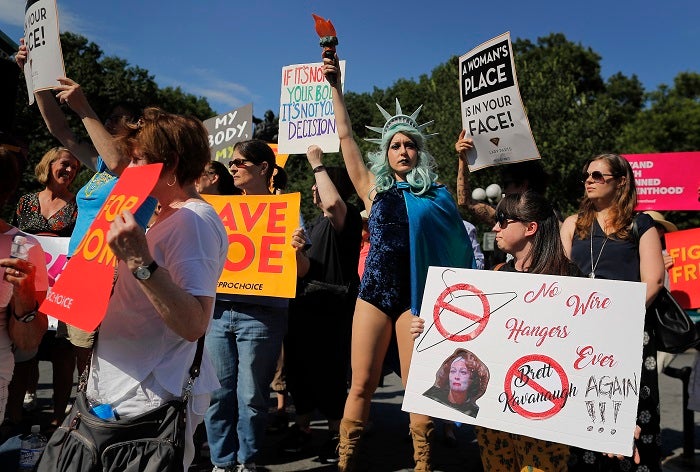Abortion Access: Before Roe and Now
Listen 48:56
Women demonstrate during a pro-choice rally, Tuesday, July 10, 2018, in New York. Many Democrats and abortion-rights supporters believe a new conservative justice could tilt the court in favor of overturning Roe v. Wade. (AP Photo/Julie Jacobson)
Guests: Elizabeth Nash, Amelia Bonow, Gillian Frank
Abortion access in America might be undergoing some changes soon. With Justice Kennedy’s recent retirement announcement, many have speculated that Roe v. Wade is in danger of being overturned. But, despite Roe, there are many places in the country with laws on the books that create poor abortion access, making the service impossible for some women. On today’s show, we take a look the state of abortion around the U.S. today. ELIZABETH NASH, Senior State Issues Manager at the Guttmacher Institute, will break down abortion access state by state and explain some of the restrictions in place that limit access and force clinic closure. Despite these restrictions, the Guttmacher Institute reports that nearly one in four women in America have had an abortion by age 45. AMELIA BONOW, co-founder of #ShoutYourAbortion, joins us for a conversation about the stigma and silence surrounding a common procedure. Then, a story from before Roe was passed: GILLIAN FRANK, who teaches in the American Studies program at University of Virginia, tells us about the Clergy Consultation Service on Abortion, a major network of clergy who helped women obtain safe abortions before 1973.
WHYY is your source for fact-based, in-depth journalism and information. As a nonprofit organization, we rely on financial support from readers like you. Please give today.





